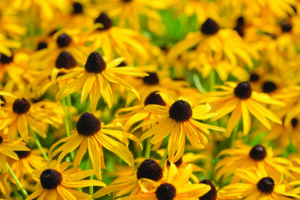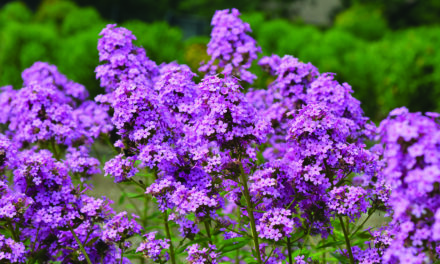
Black Eyed Susans have a long blooming season, typically brightening the world up from June to October.
There are some things that are just so Maryland: Old Bay and crabs, of course — but also, the simple, cheery look of Black Eyed Susans, rudbeckia hirta, along roadside stands.
When it comes to a state symbol, the Black Eyed Susan has Old Bay beat by more than 20 years.
It became the Maryland State flower since 1918 and Old Bay was launched in Baltimore in 1941 by a German immigrant whose family had it for generations.
As for how the Black Eyed Susan came into prominence, that happened at a Farmer’s Round-up in 1898, where women could attend their own session and brainstormed on the topic of a state flower.
The progressive ladies debated between the Black Eyed Susans and Goldenrods.
The two respective flowers would face off again at the 1918 State Senate where they would again reign victorious.
Opponents worried the rudbeckia would look like “a black eye from the Kaiser” as it was during World War I.
In the end, the winning factors were both their attractiveness as well as their complimentary look to the yellow and black of the Calvert crest on the Maryland State Flag.
The good looks that gave it the edge do correlate with its cheery extended family, the sunflower.
Its “black eye,” composed of 250-500 individual flowers, also lumps them into the coneflowers family as well as perennial daisies (though, they are not true daisies.)
So does your Maryland-loving garden need some?
If you have a sunny spot, why not?
Black Eyed Susans are easy to maintain — which is why they are often seen thriving along the highway.
While Maryland does of course lay claim to them, their hardiness also means you’ll see them on roadsides going as far as Canada as they can flourish all the way from USDA hardiness zones 3 to 9.
Of course, they also are great at attracting pollinators like flies, beetles, moths, small butterflies, bees, wasps and sawflies.
Birds also like to swoop in and eat the seeds.
They have a long blooming season, typically brightening the world up from June to October.
Deadheading after the first bloom will help to encourage a second bloom in the fall.
By then, you can leave them for birds to nibble on but if they are starting to crowd, you may consider choosing to prune them before they go to seed again.
Likely every few years you’ll want to consider dividing them.
Some varieties do grow rather tall, so if you choose to, you could loosely stake them in groups especially when they hit their peak in summer.
Maybe you are out of room in your garden but you can still bask in their glory with another Maryland tradition, the Preakness at Pimlico Racetrack in Baltimore.
This year, when the 149th Preakness will be celebrated on Saturday, May 18, and the racetrack will also celebrate the 100th running of the “Black Eyed Susan Day,” the day before, on May 17.
This race features 1, 3/16-mile race for 3-year-old fillies where the winner jockey and filly combo are draped in Black Eyed Susan.
It’s often referred to as a “Ladies Day Out,” fitting as the flower has been a ladies favorite from the beginning.
Black Eyed Susans symbolize both resilience and happiness and joy, as well as Maryland pride.
Who wouldn’t want that in their garden?






